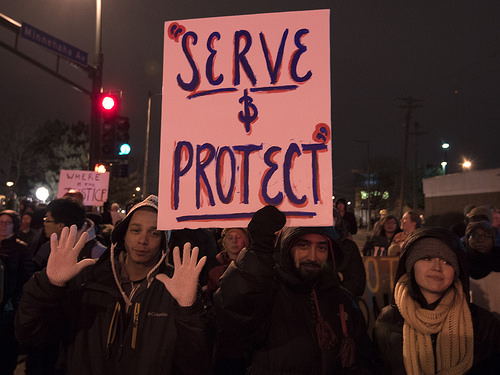This is a critical project you should know about.
Do you know how many comprehensive records are kept of civilians killed by law enforcement in the United States?
The answer is none…until now.
Starting this year, The Guardian is counting. Its new tracking system, called The Counted, will collect reported stories, demographics and crowd-sourced information in one online database.
Currently, law enforcement agencies may choose to submit their annual count of “justifiable homicides” to the FBI, or they may choose not to. Between 2005 and 2012, only five percent of agencies opted to do so. With this system, the FBI counted only 461 “justifiable homicides” in 2013. Crowd-sourced databases like Killed by Police and Fatal Encounters added another 300 to that figure.
To date, The Counted has already tracked 470 police-related fatalities for 2015. Clearly, there is a gap to be filled.
Initiated by the Guardian’s former U.S. chief, Katherine Viner, the project (and the small team of journalists behind it) will do what the law will not: it will make public as many of these “justifiable homicides” as possible, and, implicitly, it will demand accountability for so many deaths. Explicitly, The Counted remains deliberately (and necessarily) neutral, reporting the facts as they are, without accusation.
With names like Michael Brown and Freddie Gray garnering national—and international—attention, and with awareness increasing that these incidents represent only a tiny fraction of police-involved deaths taking place (we might also reasonably employ terms like “police brutality,” “killings,” and “abuse of power”), there is clearly a need for such an effort.
I believe The Counted could do justice to the real purpose of journalism: telling the truth.
As a nation, I think (or I hope) we want to know the truth. The more we realize we are not being told the truth—that the media unapologetically feeds us half-truths, racially biased reporting and stories carefully selected to sustain the status quo—the more we will turn to other sources. The more voices are silenced by monochromatic mainstream channels, the more people will seek to engage in alternative, more inclusive dialogues.
In any case, that is my optimistic belief.
With the aim to implement a “verified crowd-sourced system” that relies on tips and documentation from civilians, The Counted seems poised to become a significant tool in these dialogues. The cynic in me insists that I ask if there isn’t good money to be made from sensationalist stories about police killings, too, but even if the project will prove a lucrative addition to the Guardian’s repertoire, that doesn’t diminish its importance.
For example, analysis of data collected by The Counted has revealed that of the 470 fatalities recorded in 2015, 104 victims were unarmed.
That’s about 22 percent.
However, 33 percent of black men killed were unarmed—that’s a ten percent jump.
A black person killed by police in the U.S. is twice as likely to be unarmed as a white person. Pause and let that sink in.
These numbers matter.
Facts matter; they are powerful weapons.
The truth matters.
If we have the truth, we can fight injustice…I have to believe that.
For more information on these initiatives and the statistics they have produced, check out The Counted, Mic and Daily Dot.
Relephant Read:
Baltimore Riots: Two Compelling Perspectives on Non-Violence.
Author: Toby Israel
Editor: Renée Picard
Photo: Fibonacci Blue at Flickr







Read 0 comments and reply